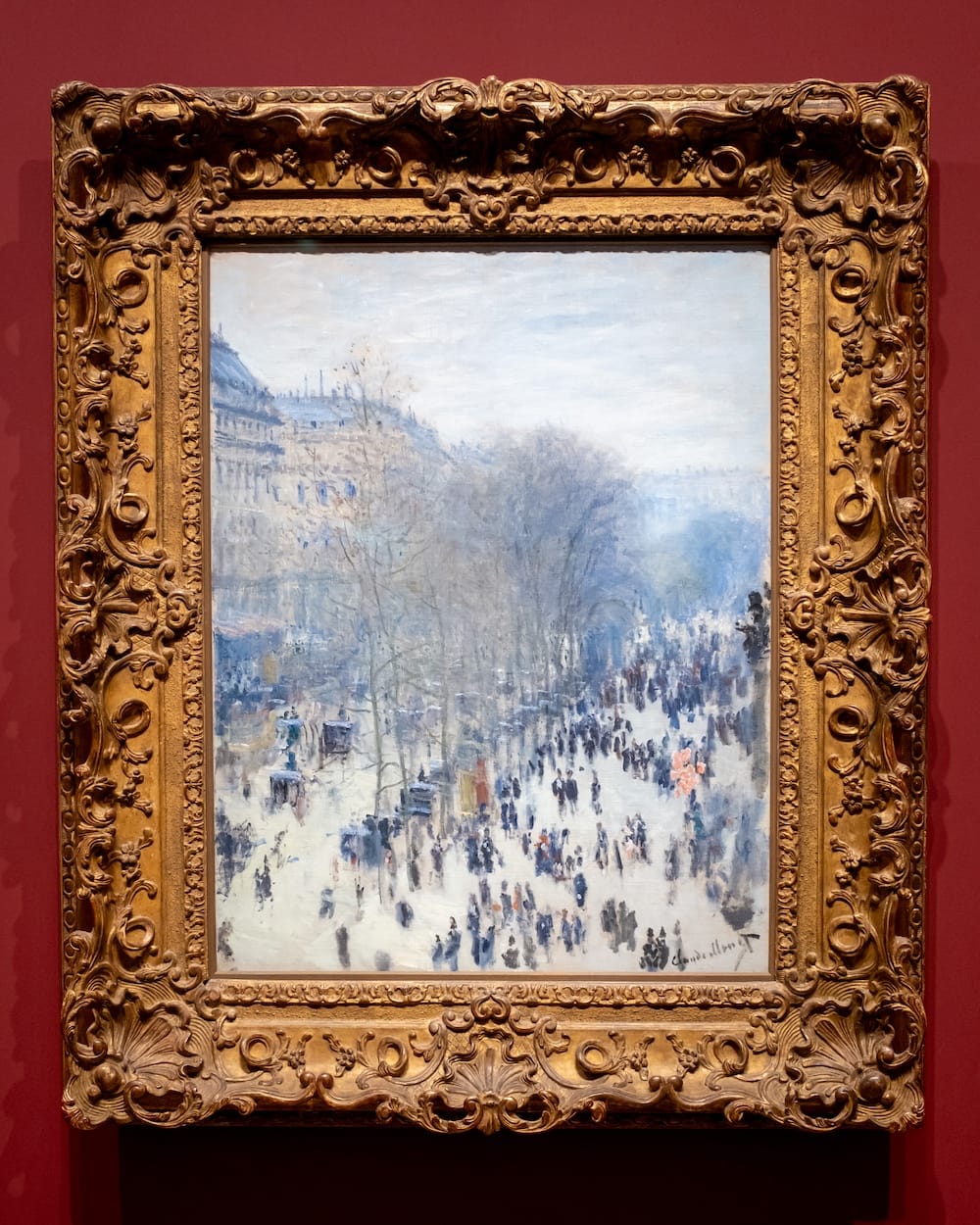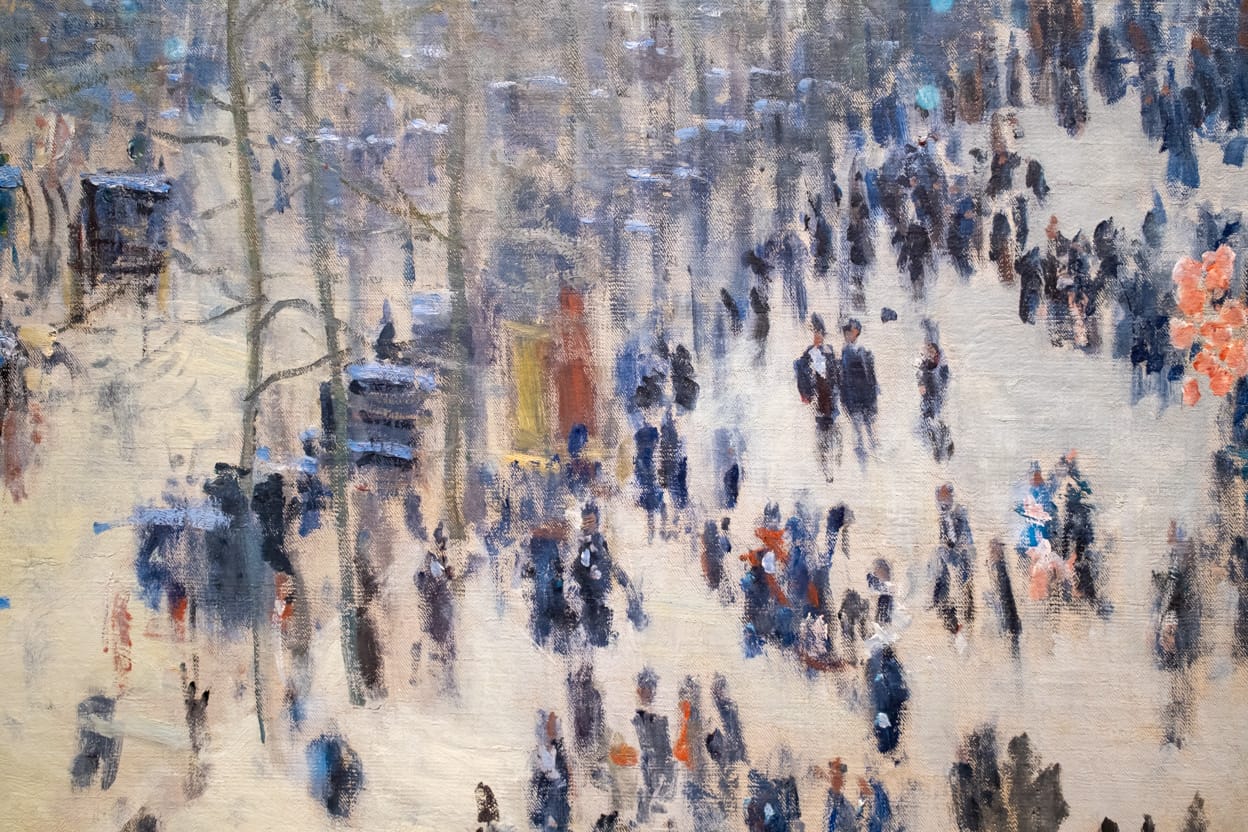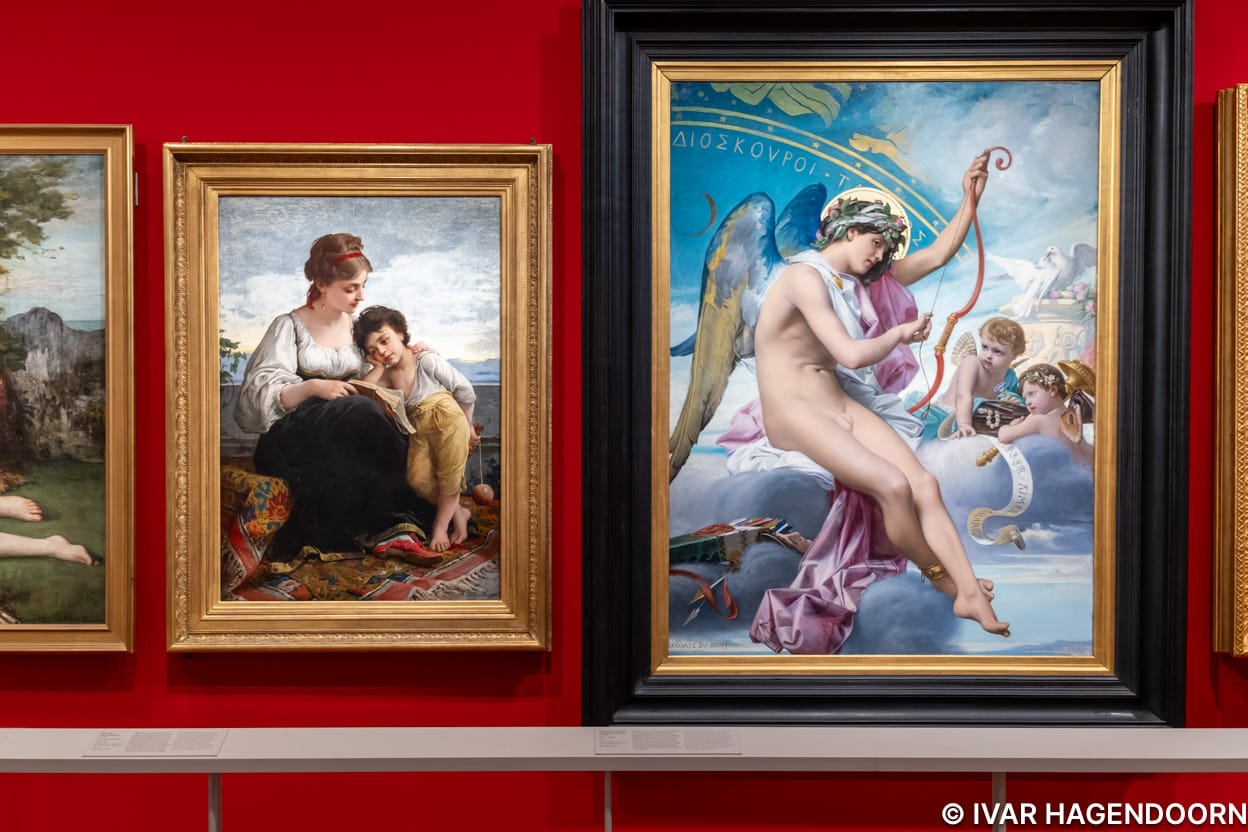April 1874 a group of artists, who called themselves Société anonyme des artistes peintres, sculpteurs et graveurs, and which included Claude Monet, Edgar Degas, Pierre-Auguste Renoir, Camille Pissarro, Paul Cézanne, Alfred Sisley and Berthe Morisot, organized an exhibition that has since become legendary. Among the works on display was a painting called “Impression, soleil levant” (Impression, sunrise, 1872) by Monet, which shows the docks on the harbour of Le Havre in the morning mist. The painting is interesting not just because of the originality of its technique, but also because of its choice of subject. At the time most landscape paintings showed picturesque scenes, but for his painting Monet chose an industrial site. The response of critics and the public was lukewarm at best. Borrowing its title from Monet in a review intended to ridicule the exhibition, one critic called it “The Exhibition of the Impressionists”. The name stuck and the rest is (art) history.
To mark the 150th anniversary of this landmark exhibition the Musée d’Orsay, together with the National Gallery of Art in Washington DC, has organized a magnificent exhibition, Paris 1874. Inventer l'Impressionisme, which brings together some of the works that were shown at the First Impressionist exhibition and at that year’s official Salon.
In 1874 France was recovering from its defeat against Prussia in the Franco-German War of 1870, which had been followed, in 1871, by a popular uprising in Paris. The 1870s also mark the beginning of the Second Industrial Revolution and a period of urbanization and rapid social change. Against this background a number of artists began experimenting with novel techniques while trying to capture the fleeting, ephemeral experience of modern life.
At the time French art was still dominated by the Académie des Beaux-Arts. Every year the Académie organized a popular, juried exhibition, the Salon. The jury, which sought to uphold the traditional values of the Académie, was notoriously conservative and regularly rejected a large number of submitted paintings.
In 1863, the Salon jury rejected more than half of submitted paintings, causing an uproar among artists who had previously been included. Upon hearing of the commotion Napoleon III instituted a Salon des Réfusés to showcase works that had been rejected for the official Salon so as to allow the public to judge for itself. The exhibition, which that year included Manet's “Déjeuner sur l'herbe” (1862-63), was a huge popular success. The next few years, despite the urging of many artists, no Salon des Réfusés was organized.
In December 1873 Monet, Degas, Renoir, Pissarro, Sisley, Cézanne and Morisot founded the Société anonyme des artistes peintres, sculpteurs et graveurs to organize their own exhibition. The opening was carefully planned two weeks in advance of the Salon. Degas went to great lengths to invite artists who also exhibited at the Salon so as to avoid the label of a “Salon des Réfusés”. The exhibition attracted little more than 3,500 visitors and only a handful of paintings were actually sold.
Eventually most works found a buyer. Over the years they would change hands and get dispersed across the world. In order to recreate the original show the Musée d’Orsay therefore had to obtain loans from a number of other institutions. Consequently, the exhibition includes several masterpieces that I had never seen before or only knew from reproductions.


Claude Monet, Boulevard des Capucines (1873-74)
“Boulevard des Capucines” (1873-74) by Claude Monet, on loan from the Nelson-Atkins Museum of Art in Kansas City, is one of the many highlights of the exhibition. It is fascinating to see how, with a few dots of paint, Monet created the impression of a lively city street. It was in fact painted from the window of the studio of the photographer Nadar, the same building where the First Impressionist exhibition took place.
Other highlights include “Classe de danse” (1870) by Degas, on loan from the Metropolitan Museum of Art, “La Loge” (1874) by Renoir, on loan from the Courtauld Institute, “Le Bal à l’Opéra” (1873) by Manet, on loan from the National Gallery of Art and which was rejected for that year’s Salon, the afore mentioned “Impression, soleil levant” (1872) by Monet, on loan from the Musée Marmottan-Monet and “Le Berceau” (1872) by Morisot from the Musée d’Orsay’s own outstanding collection of 19th century French art. Also included are two other wonderful paintings by Berthe Morisot, “La Lecture” and “Cache-cache” (1873) as well as a portrait of Morisot by Manet.
To put the works included in the 1874 impressionist exhibition into perspective the organizers of the Musée d’Orsay show have also brought together some of the paintings that were on display at that year’s Salon.

It is easy, too easy, to deride the paintings that were included in the official Salon. Some do indeed look rather outdated by today’s standards, such as the paintings featuring historical or mythological motifs. But the Salon also included some interesting works, such as the in-your-face “Morts en ligne” (1873) by Auguste Lançon, which shows a row of dead French soldiers against the background of smoke rising up from the town of Bazeilles and which is on par with Goya’s “The Third of May 1808” in expressing the horrors of war.
Perhaps surprisingly only seven of the 30 artists who participated in the First Impressionist exhibition have gone down into history as impressionists. Over the next few years they would organize several other exhibitions. The Musée d’Orsay show also presents some works that were on display at the Third Exhibition of the Impressionists, including the glorious “Bal du moulin de la Galette” (1876) by Renoir.
Afterwards I visited the Musée d’Orsay's amazing permanent collection. The Musée d’Orsay regularly changes some of the works on display and I was delighted to discover a number of paintings that I didn’t recall seeing on my most recent visits. I love "Au lit" (In Bed, 1891), a surprisingly modern composition by Édouard Vuillard. I also realized once more that I actually prefer Manet to Monet. "La Dame aux éventails" (1873) and "La Lecture" (1865-1873) are simply awesome.
Paris 1874. Inventer l'Impressionisme is at the Musée d’Orsay until 14 July 2024 and at the National Gallery of Art, Washington DC from 8 September 2024 until 19 January 2025.